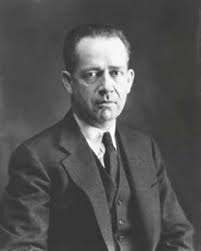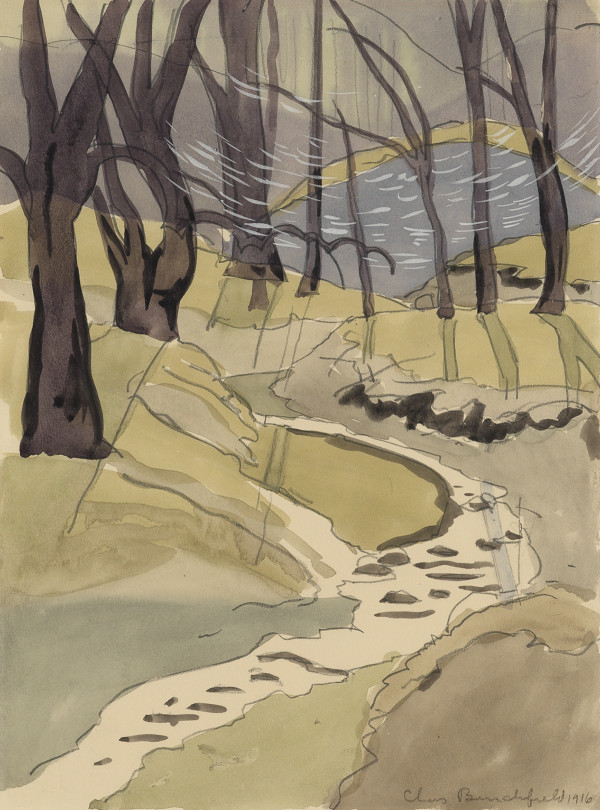
-
Artist: Charles Ephraim Burchfield (American, 1893-1967)
“Charles E. Burchfield was born in Ashtabula Harbor, Ohio on April 9, 1893. He was a shy and somewhat lonely youngster and he spent long hours exploring the nearby woods. He was known to paint in the pouring rain; his perseverance paid off in some of the most unusual nature paintings in American art. Toward the end of high school he started writing in a journal, which he kept up regularly for the next fifty years. By the time he died, the journal filled seventy-two volumes. After graduating from high school, Burchfield studied at the Cleveland School of Art. There, it was not the modernistic battles raging in Paris or at New York's Armory Show that influenced him, but Chinese scrolls and Japanese prints.” (1)
“His early work included modernist views of Salem and the surrounding countryside, along with imaginative landscapes grounded in a personal visual language of fantasy. Around 1920, he adopted a more realist approach grounded in the austere imagery of industrial development, and the local architecture of Midwestern [sic] cities and towns.” (2)
“[He] studied with Henry G. Keller, Frank N. Wilcox, and William J. Eastman.” (3)
“In 1921, Burchfield moved to Buffalo, New York, to work as a wallpaper designer for the H. M. Birge Company. He married and started a family, eventually raising four daughters and a son. Around this time, he began to receive critical acclaim for his focus on what he once called the “great epic poetry of American life.” He had several exhibitions at the Montross Gallery in New York starting in 1924.” (2)
“He became friends with Edward Hopper in 1928, after Hopper’s essay on Burchfield appeared in the July issue of Arts magazine.” (3)
“Burchfield gained major national recognition in 1930, when the newly formed Museum of Modern Art organized an exhibition of his early work. It was the first single-artist exhibition held at the museum. A year earlier he had joined the Frank K. M. Rehn Galleries in New York, which continued to represent him for the rest of his life.” (2)
“After eight years, he left Birge to devote all his time to making his work larger, grander and more realistic. His struggle to express his intense response to nature with his personal symbolic vocabulary continued until his death in 1967.” (1)
Reference:
1. Askart staff. Biography from the Archives of askART [internet]. [cited 2019 Jul 9]. Available from: http://www.askart.com/artist_bio/Charles_Ephraim_Burchfield/24179/Charles_Ephraim_Burchfield.aspx
2. DC Moore Gallery Staff. Biography [internet]. [cited 2019 Jul 9]. Available from: http://www.dcmooregallery.com/artists/charles-burchfield?view=slider
3. Burchfield Penney Art Center Staff. Artist to America [internet]. [cited 2019 Jul 9]. Available from: https://www.burchfieldpenney.org/collection/charles-e-burchfield/biography/
